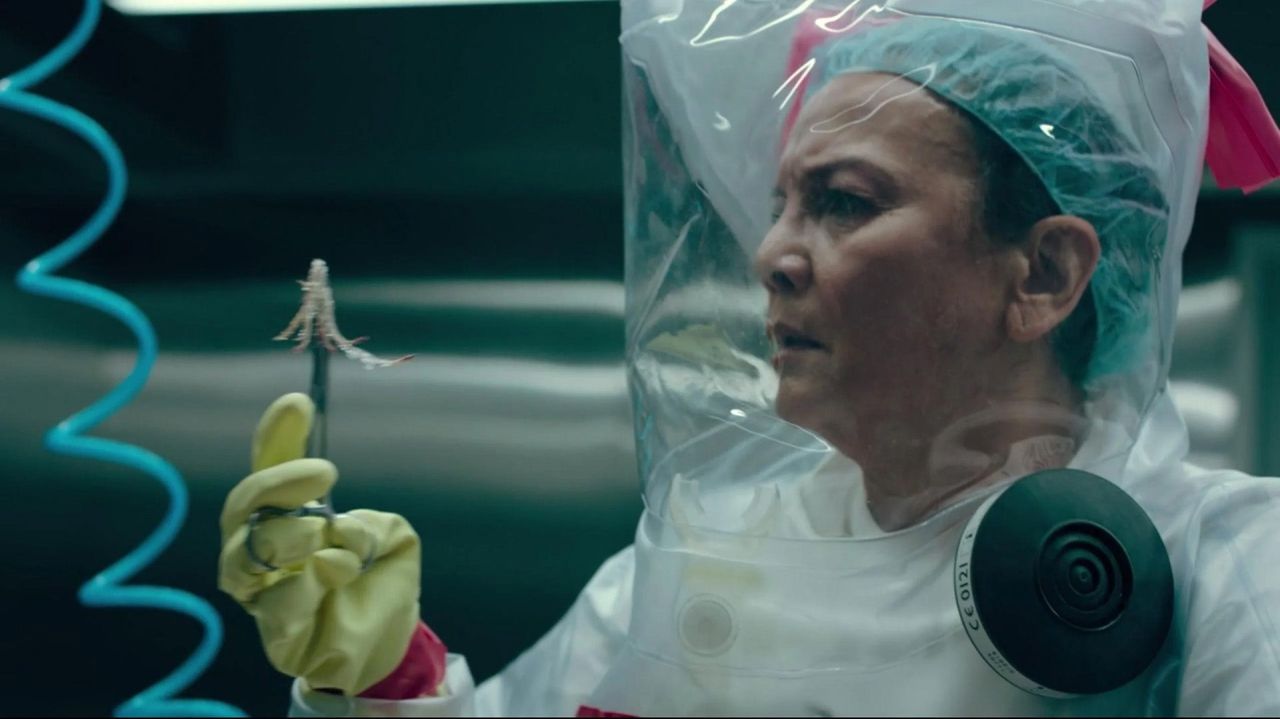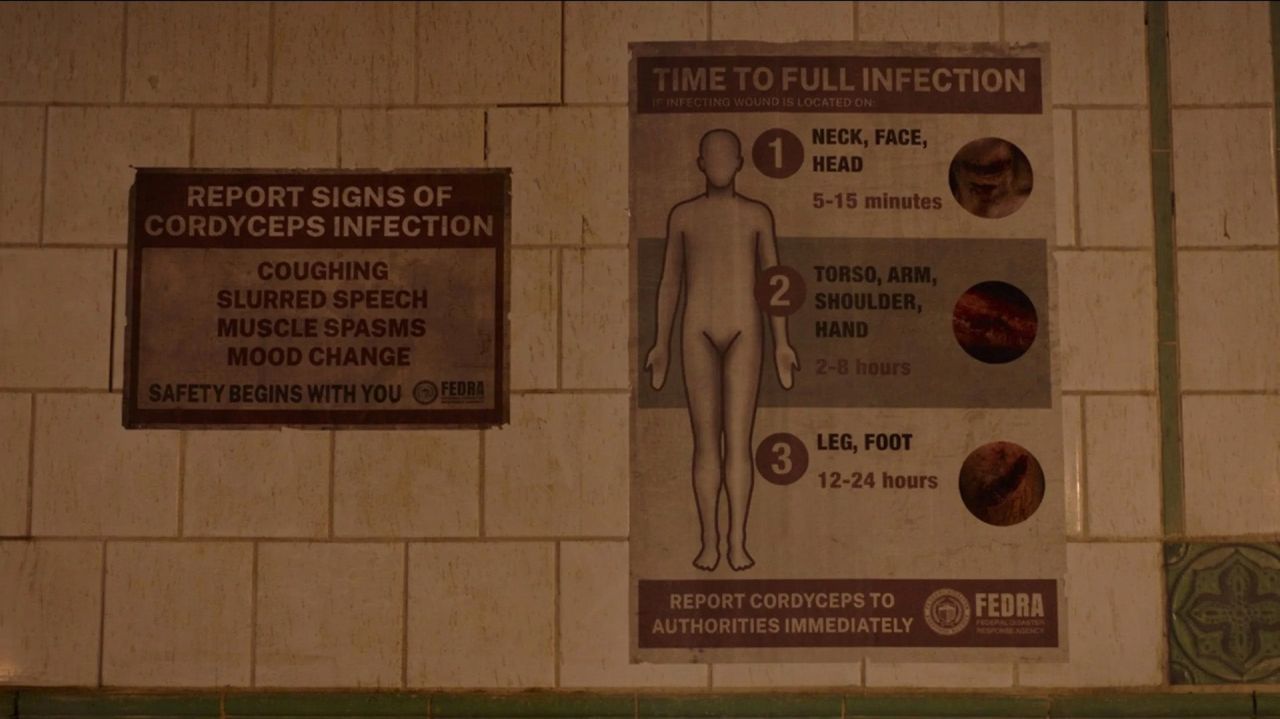The Last of Us’ TV adaptation is a rare bird in terms of staying true to its source material — particularly when it comes to videogames. But even a show that aims to be as authentic as HBO’s treatment of the hit PlayStation series needs to make a few changes to adapt to a different form of storytelling. After the premiere of the show’s second episode, “Infected,” we now know a little bit more about how the infection spread, as well as where it likely came from. Expect this blog to receive future updates as the show continues.
The Last of Us tells a story of post-apocalyptic survival in the wake of a catastrophic pandemic that permanently changes the world as we know it. In The Last of Us’ take on science fiction, the zombie apocalypse is brought on by a mutated form of a very real fungal infection. The show keeps this premise, but makes a few key changes that affect the lore and storytelling. But that’s not the only change the show makes. In-world events, infection specifics, character relationships, and more are all gently tweaked with this live-action trip through a post-apocalyptic America. It should go without saying, but what follows contains spoilers for The Last of Us in TV and game form.
Same: Fungus among us
The Last of Us has an all-too-real inspiration for its infectious plague. What the show and the game calls “cordyceps” is known in actual nature as ophiocordyceps, a fungus that targets ant colonies in tropical forests. Similar to how The Last of Us’ humans react, the real-world ophiocordyceps takes over ants’ minds, physically warping their bodies and guiding their behaviour to serve as nothing more than a vector to spread spores that can infect other ants.
Read More: The Last of Us Makes For Good TV, But It’s a Tough Watch After A Real Pandemic
Fun fact: While ants seem capable of sensing when a member of their brood is infected (removing the infected individuals when necessary), they largely avoid the infection by remaining high up in forest canopies, travelling along a meshwork of constructed trails high above the forest floors to avoid the literal “graveyards” of infected ants below. Keep that in mind next time you play through The Last of Us Part II.
Also, don’t hate onophiocordyceps too much. It too suffers from a hyper parasitic infection known as O. unliateralis. It’s parasites, all the way down.
Change: Spores are out, tendrils are in (and this stuff kills you way faster)
One of the first, and perhaps sharpest, deviations HBO’s The Last of Us takes from the show is how cordyceps spreads in the first place. While a bite from an infected person still transmits the disease, the airborne spores of the game are replaced with tendrils that pour out of an infected body to enter another victim and infect them.

In the game, players often have to navigate areas filled with spores, necessitating a gas mask to avoid infection (though they often seem to take those damn masks off well before it seems safe to). While gas masks aren’t really a game item that players interact with that much, the vulnerabilities of breathing in the infection remain a moment of high tension.
Showrunner Craig Mazin explained that this change came out of a need to build a bit more believability into the show’s world. “If we put spores in the air,” Mazin told Comicbook, “it would be pretty clear that they would spread around everywhere and everybody would have to wear a mask all the time.” It’s a welcome change as we’d have been robbed of Pedro Pascal’s wonderfully expressive face like we were in that other show where he’s escorting another young person with special physiological characteristics. The world is full of original ideas.
Read More: With The Last of Us, Pedro Pascal Becomes The Internet’s Daddy
That said, Mazin hasn’t ruled out spores in the show down the line, saying “I don’t necessarily know if we’re going to see any spores this time around, but to say that our world is devoid of them would not be accurate,” in an interview with Variety.

Another key change of the infection concerns the speed at which someone turns after getting bit. In the game, the revelation of Ellie’s bite and immunity prompts Tess to say “everyone turns within two days.” In the show, as noted from in-world documentation, the time-to-turn varies depending on where someone gets bit. In the show, a best case scenario is a bite on the leg or foot, which seemingly takes 12 to 24 hours. A bite on the torso or other area in the middle of the body sees transformation in two to eight hours, while a bite on the neck, face, or head results in a five to 15-minute grace period.
Fun fact: The in-spore-action (not sorry) for the cordyceps’ tendrils might just have its roots in the videogame. Eagle-eyed fans spotted this in concept art previously, as well as in unused voice lines that mention tendrils. A recent interview with Neil Druckmann and Craig Mazin indicated that the idea indeed came from looking at some conceptual drawings, though it’s not clear if this is the same concept art that was included in the official art book from 2013.
We looked at concept art where there’s this implication of the fungus growing under the skin. What if that was the thing? It’s not so much about the bite, they just need these tendrils to go from one host to another and that’s how the infection spreads.
Same: Runners, clickers, and overgrown areas (oh my)
Though a few infected forms that appear in the game have yet to arrive in the show (we haven’t yet seen a bloater, shambler, or stalker, for example), runners and clickers are in full form, matching their behaviour as it appears in the game. Episode two also showed that, much like in the game, specific areas with high concentrations of infected become disastrous dens of death, decay, and fungal overgrowth.
Read More: The Last of Us’ Second Episode Ends In Tragedy
Episode two introduces us to its clickers, who are a mirror image of the shiv-vulnerable beasts we’re used to in videogame form. Like in the game, Joel indicates to Ellie that these creatures can’t see, but that they instead have razor-sharp hearing that they likely use to echolocate.
Fun Fact: The show goes another step further in matching up its clickers to the game, using the same voice actors who dedicated their talents to click, scream, and make all manner of weird sounds in the games.
Sound On! An unused voice line from #TheLastOfUs gives us a small glimpse at what the newly announced Tendrils are like!👀🔥 pic.twitter.com/e7TyWOsRBI
— Naughty Dog Central (@NaughtyNDC) January 8, 2023
Change: The infected appear to be connected
It’s not entirely clear whether or not this doesn’t exist in the game’s fiction (though it would explain how some of these bastards seem to know where I am entirely too fast), but as Tess tells Ellie in the second episode, the infected appear to be networked, sharing some kind of uniform consciousness and sensory input: “You step on a patch of cordyceps in one place, and you can wake a dozen infected somewhere else. Now they know where you are, now they come.”
This is seen in real time in episode two, where the disturbance of recently infected humans quickly leads a horde to descend on Joel, Ellie, and Tess — the last of whom’s death is depicted on screen in a frankly condemnable way. Joining the ranks of Game of Thrones’ David Friedman and D. B. Weiss, Neil Druckmann and Craig Mazin have submitted their contribution to the time-honoured masculine tradition of depicting awfully-coded violence against women on screen because it’s so “triggering” and “violative.” Good job, boys. How ever will you shock us next?
Read More: HBO’s The Last of Us Does Tess Dirty
Same: The infection spread via contaminated crops
The Last of Us as a videogame isn’t terribly concerned with exploring too many specifics of pre-outbreak society, or even where the infection came from necessarily. But as seen in a newspaper article Sarah can briefly peruse in the first game’s prologue, the lead up to the outbreak involves “the Food and Drug Administration’s investigation of crops potentially contaminated mould.”
The opening of episode two reveals that, in fact, some of the early cases of infection did in fact breakout in a flour factory. A later episode sees a character talking about cases of contaminated food stuffs, mainly flour (which we’ll talk about in a bit).
Change: A narrative patient zero
Though the show stops just shy of saying exactly who and where patient zero is, it opens up episode two by taking us to a new place where the infection is just about to hit a dangerous point of no return: Jakarta, which Sarah informed us was the capital of Indonesia just one episode ago.
Read More: The Last of Us Episode One Recap: Taking A Ride
Diverging from the in-game newspaper’s mention of South America, the show decided it would be appropriate, for whatever reason, to suggest that the outbreak began in an Asian country first.
Change: Joel didn’t get infected because….the Atkins diet?
So, in both the show and the game, we know that contaminated crops play a significant role in the spread of the infection. But if flour, a pretty common ingredient in most food, was one of the key vectors of transmission, how did Joel avoid it?
While we know that Sarah was unable to make pancakes given that they were out of flour (and that she didn’t eat her neighbour’s contaminated cookies because gross, raisins), surely flour would’ve existed somewhere else for Joel to have come in contact with? Well, in episode one, Joel tells his neighbour he’s on the Atkins diet. While I first assumed this was a simple nod to a very silly keto-adjacent diet that was popular in the 2000s, as Esquire observed, fans are speculating that Joel’s aversion to carbs is likely what kept him safe while the world fell apart.
So there ya go: Weird, probably-unhealthy diets might make a difference after all. Let’s just hope the show doesn’t decide to haunt us with more forgettable elements of early ‘00s American culture.
